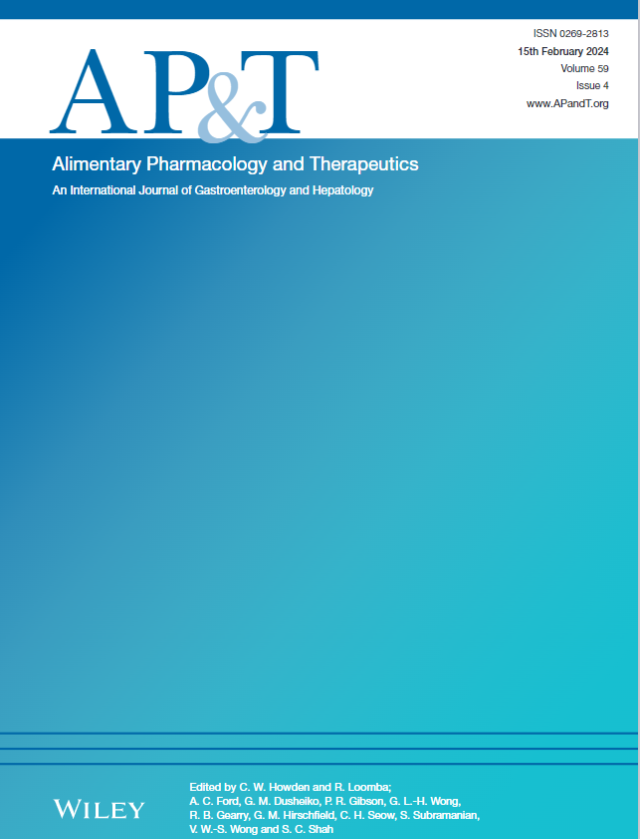头孢菌素诱导肝损伤的临床和遗传关联:来自药物性肝损伤网络的见解。
IF 6.7
1区 医学
Q1 GASTROENTEROLOGY & HEPATOLOGY
引用次数: 0
摘要
头孢菌素因其疗效和安全性被广泛使用。虽然罕见,特异药物性肝损伤(DILI)已报道与他们的使用。在这里,我们描述了头孢菌素相关肝损伤的临床特征和HLA相关性。方法2004年1月1日至2022年11月2日,共有2347例DILI纳入DILIN研究,其中1854例被判定为可能、极可能或明确。进行HLA测序,并检查与DILI风险的关系。结果58例(3%)病例归因于不同头孢菌素,包括头孢唑林(n = 40)、头孢氨苄(n = 4)、头孢曲松(n = 3)、头孢地尼(n = 3)、头孢呋辛(n = 3)和其他5种单药。临床特征包括自限性病程,1 - 4周内出现混合性或胆汁淤积性生化模式,无超敏特征。最引人注目的是头孢唑林和其他单剂量头孢菌素的表型,1至3周后出现黄疸、疲劳和瘙痒。在整个队列中,HLA-A*02:01与头孢菌素所致肝损伤风险增加显著相关(OR: ~2.5 ~ 2.7, P < 0.0001)。头孢唑林的相关性最强,其携带者频率为85%,而其他药物的DILI携带者频率为38%。结论头孢菌素可引起自限性、混合性/胆汁淤积性肝炎,在头孢唑林短期治疗后出现,潜伏期可达3周。头孢菌素引起的肝损伤与HLA-A*02:01等位基因有关,该等位基因与发病时更严重的肝损伤有关。本文章由计算机程序翻译,如有差异,请以英文原文为准。
Clinical and Genetic Associations in Cephalosporin-Induced Liver Injury: Insights From the Drug-Induced Liver Injury Network.
INTRODUCTION
Cephalosporins are widely prescribed antibiotics due to their efficacy and safety. Although rare, idiosyncratic drug-induced liver injury (DILI) has been reported with their use. Here, we characterise the clinical features and HLA associations of cephalosporin-related liver injury.
METHODS
Between Jan 1, 2004, and Nov 2, 2022, a total of 2347 cases of DILI were enrolled in the DILIN study, of which 1854 were adjudicated as probable, highly likely, or definite. HLA sequencing was performed, and association with the risk of DILI was examined.
RESULTS
58 cases (3%) were attributed to different cephalosporins, including cefazolin (n = 40), cephalexin (n = 4), ceftriaxone (n = 3), cefdinir (n = 3), cefuroxime (n = 3), and five other individual agents. Clinical features included a self-limited course with a mixed or cholestatic biochemical pattern without hypersensitivity features occuring in 1 to 4 weeks. Most striking was the phenotype of cefazolin and other parenteral cephalosporins given as a single dose with the onset of jaundice, fatigue, and itching 1 to 3 weeks later. In the total cohort, HLA-A*02:01 was significantly associated with an increased risk of cephalosporin-induced liver injury (OR: ~2.5-2.7, P < 0.0001). The association was strongest with cefazolin, with carrier frequencies of 85% vs. 38% in those with DILI from other drugs.
CONCLUSIONS
Cephalosporins can cause self-limited, mixed/cholestatic hepatitis that arises after a short course of therapy with a latency of up to 3 weeks with cefazolin. Cephalosporin-induced liver injury is associated with the HLA-A*02:01 allele, which is linked to more severe liver injury at the onset of illness.
求助全文
通过发布文献求助,成功后即可免费获取论文全文。
去求助
来源期刊
CiteScore
15.60
自引率
7.90%
发文量
527
审稿时长
3-6 weeks
期刊介绍:
Alimentary Pharmacology & Therapeutics is a global pharmacology journal focused on the impact of drugs on the human gastrointestinal and hepato-biliary systems. It covers a diverse range of topics, often with immediate clinical relevance to its readership.

 求助内容:
求助内容: 应助结果提醒方式:
应助结果提醒方式:


